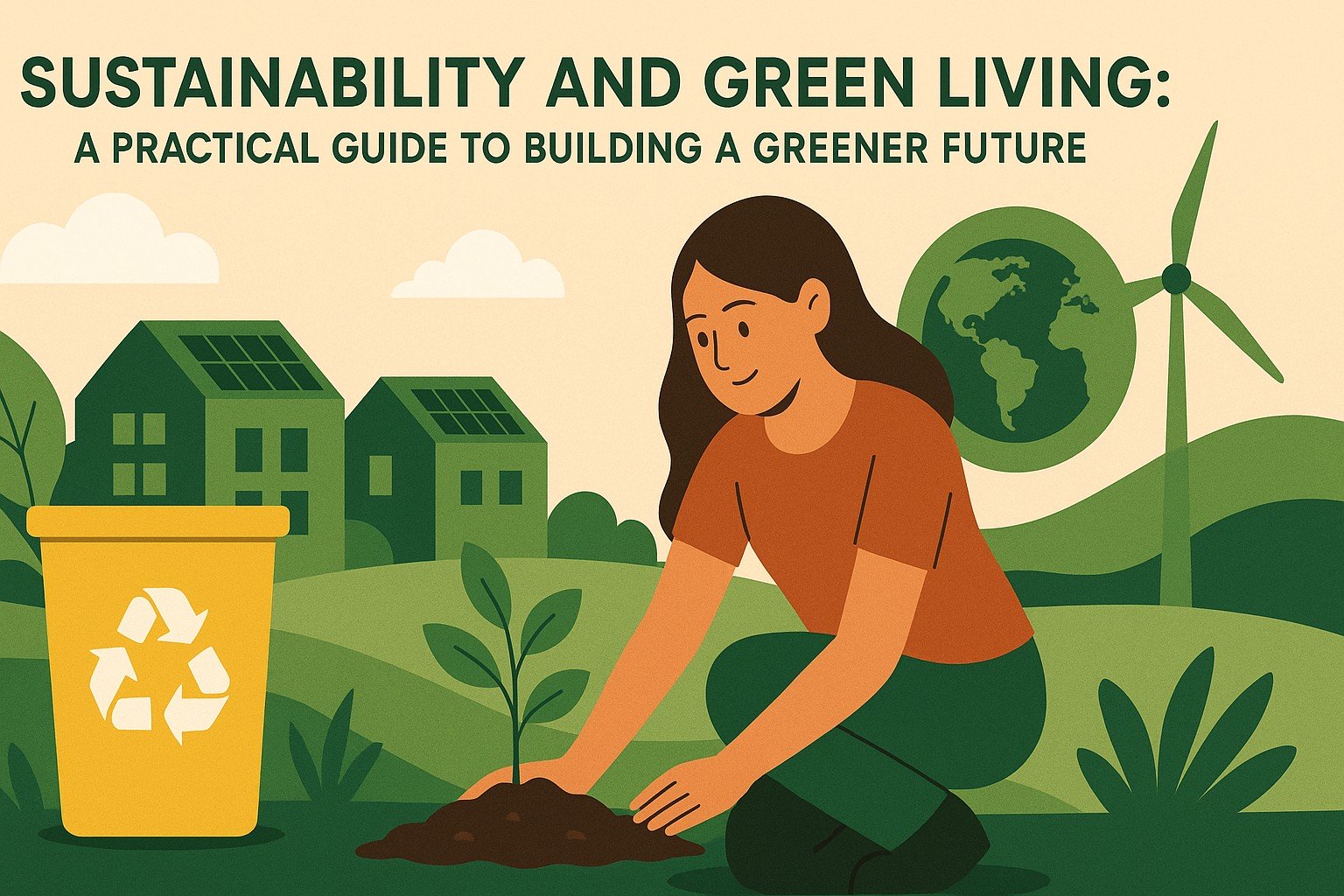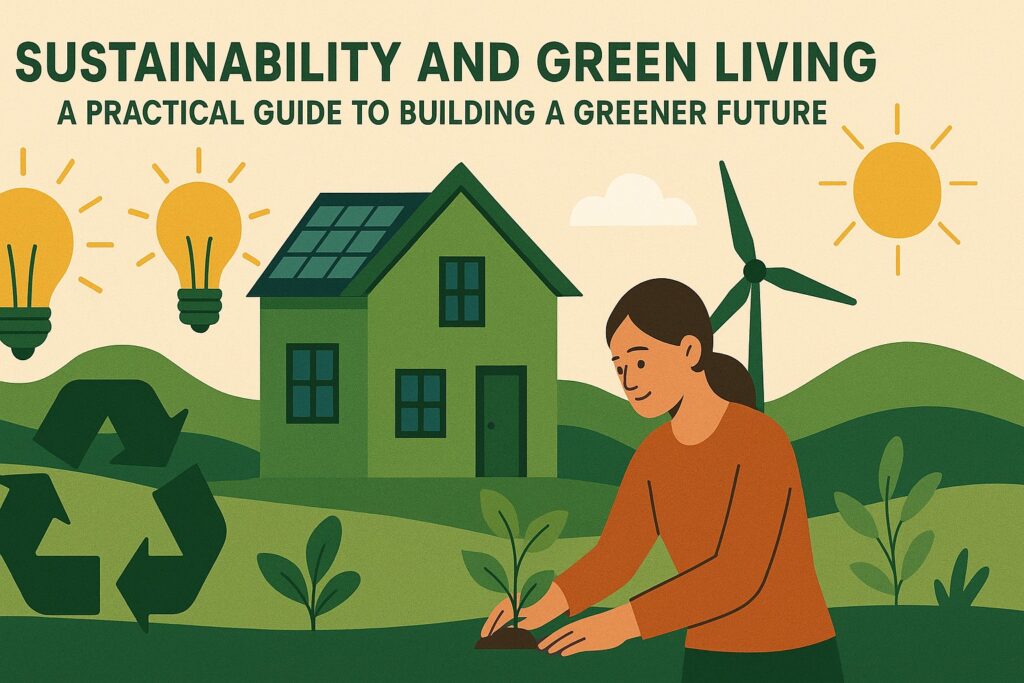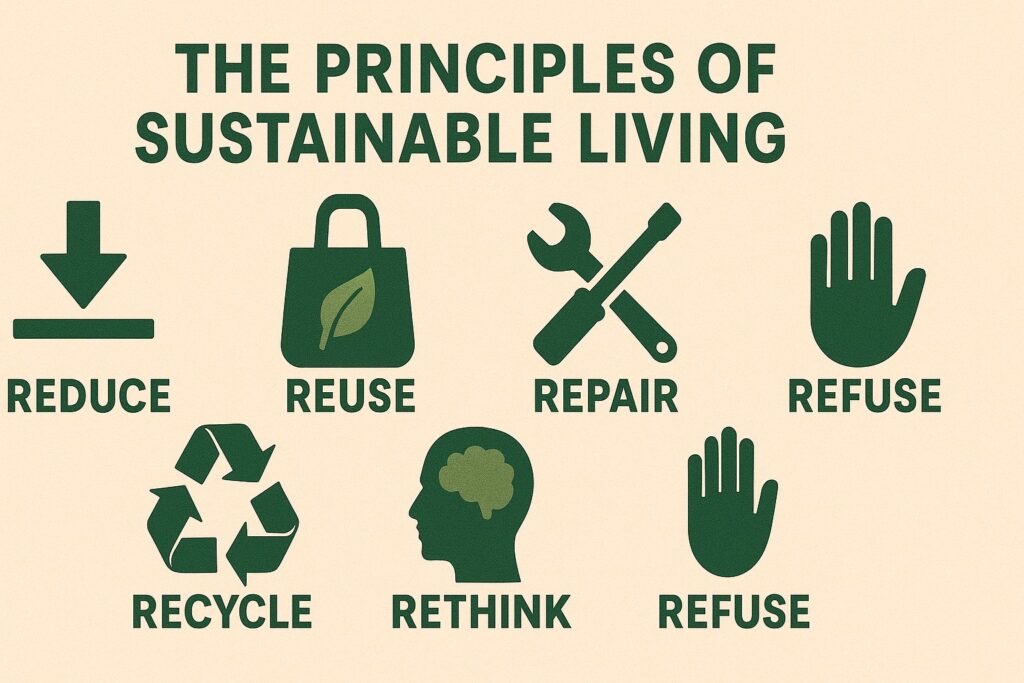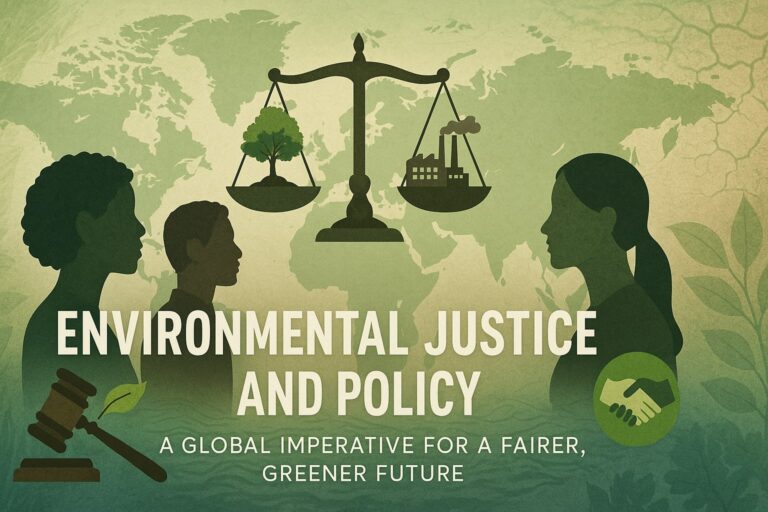Sustainability and Green Living: A Practical Guide to Building a Greener Future (2025)

“We do not inherit the Earth from our ancestors; we borrow it from our children.”
This old proverb captures the essence of sustainability and green living. In the 21st century, it is not just a noble idea—it’s a necessity. From climate change to plastic pollution to resource depletion, the environmental challenges we face demand urgent action and lasting change.
Today’s headlines remind us, almost daily, that Earth’s atmosphere is warming, ice sheets are melting, and vital resources like clean water and arable soil are disappearing. In this troubling context, turning talk of sustainability from abstract theory into everyday habit is no longer optional. Simply put, to live sustainably is to satisfy one’s own needs in the present without stealing opportunity or security from people yet unborn.
That idea sounds deceptively simple, though deciding exactly what it looks like in practice can feel overwhelming. Green living makes the concept tangible: it asks us to swap single-use plastics for a refillable bottle, walk instead of always driving, compost food scraps, and support companies that measure their success in more than quarterly profits. This brief guide boils down those broad suggestions into clear, do-able steps, so readers can shrink their personal carbon trail, save water and energy at home, and encourage neighbours, schools, and local leaders to build a healthier, fairer planet.
Sustainability is not the exclusive domain of scientists, campaigners, or government officials; it is a commitment anyone can adopt in daily life at home, in the office, or around the block. The practice starts with deliberate, modest changes: trimming waste through the three Rs, leaning on renewable power, saving water, patronizing conscious brands, eating more plant foods, and steering clear of disposable plastics. Individually small, these habits at scale can move the needle on resource use and carbon output. Living sustainably does not force people to give up home comforts; in many cases, buying something small from a local farm, sharing a quiet evening in the neighbourhood park, or choosing products designed to last only enhances everyday pleasure.
Making the planet cooler means more than tossing cans in the blue bin or replacing an old bulb; it also means seeing the hidden highways, wires, and dump trucks that link your snack to planes over the ocean and realizing that every little choice can slowly pump more energy into, or pull it from , the air, dirt, and storms that touch far-off neighbourhoods.
The steps in this guide ask you to tweak your daily habits: lift the house thermostat five degrees on warm afternoons yet still feel okay, pick a pedal bike instead of a gas scooter, and back companies that cut carbon and pay workers fairly even when cheaper brands call to your wallet. One by one-sealing drafty vents, carpooling when timelines work, shopping for countertops made from recycled wood-these moves cut waste, trim road heat, and push your money toward long-lasting goods built for a toasty future.
Real change still needs a crowd and solid rules, not only single steps; teaming up on school gardens, voting for city climate laws, or joining drives that hold big polluters to account can turn personal good deeds into wide wins and a fairer world for everyone.
Living greener at home feels more like a slow walk than a sprint-it’s full of questions, small mistakes, long breaks, and still, little by little, it helps the Earth breathe a bit easier.
Complete perfection may remain unattainable, yet each small act-flipping off classroom lights, coaching a neighborhood soccer team, posting a schedule for cleaning the commons on the lunchroom wall-quietly strengthens the collective spirit the community carries well beyond campus.
The pages that follow invite you to map out climate-friendly actions consistent with your budget, schedule, and values, making each small advance feel satisfying instead of overwhelming. Whether you are still asking exactly what carbon footprint means or already carry a spare tote to the store, you will discover new ideas, realistic timelines, and real-life stories that reignite your hope for a cooler planet.
The overarching aim of this blog is straightforward: sustainability is not a distant vision, but a realistic, urgent route we can all take. By learning green-living basics and weaving them into your routine, you lend strength to the worldwide effort to guard the planet, preserve its assets, and leave a hospitable environment for future communities. Come along as we outline specific actions, practical tips, and the attitude shifts required to create a more sustainable world, advancing our shared purpose with every informed choice.
But what does sustainability mean? How can green living become part of our daily routines—not just slogans on reusable bags?
This guide will take you through
✅ What sustainability and green living mean
✅ Why they matter more than ever
✅ Practical steps for individuals, families, and communities
✅ How businesses and governments can lead
✅ The promise of a sustainable future
Let’s dive in

What Is Sustainability?
At its core, sustainability means meeting our needs without compromising the ability of future generations to meet theirs.
It’s about balance:
use what you need, not more, every time.
cut trash and clean spills before they spread.
protect forests, rivers, and all creatures big and small.
build parks, buses, and gadgets that won’t break tomorrow.
Sustainability pops up everywhere we look:
Lights and batteries
Taps and lakes
Meals and snacks
Cars, bikes, and walks
Phones, clothes, and toys
Leftovers and trash bins
Homes, streets, and gardens
We won’t nail it every day, but little steps add up.
What Is Green Living?
Green living is just day-to-day life stripped down to the essentials that care for the Earth. Instead of waiting for big policy changes, it asks us to tweak small habits that stack up to a lighter footprint.
Some easy moves include:
Passing on plastic straws and bags.
Swapping a few lights for LED bulbs.
Grabbing apples from a local farm stand.
Pedaling to school or catching the bus.
Choosing brands that treat workers and the planet right.
At its heart, green living is a personal promise: I notice what I use, how I travel, and who I support, and I want those choices to lift rather than hurt the world.
Why Sustainability Matters Now More Than Ever
Pressure on the planet has never felt this intense:
Climate change heats the air, fuelling heat waves, punishing floods, and savage storms.
Forest clear-cutting wipes out wildlife homes and chips away at our carbon sink.
Rivers and seas choking on plastic nets and micro-beads drown birds and fish alike.
Drilling, mining, and careless farming drain fossil fuels, fresh water, and rich soil.
Losing plant and animal species upsets nature’s tender balance, putting food and health at risk.
Stick with “business as usual,” scientists say, and tomorrow’s headlines will grow grim fast. Still, there’s a bright flip side.

The Principles of Sustainable Living
Turning big ideas into real-life steps can feel huge, but a few guiding rules keep us on track.
Reduce
Cut the extras you barely notice.
Buy only what you know you will use.
Ditch single-use snack forks and bottled drinks.
Pick wraps and bags with little or no packaging.
Reuse
Find new reasons to keep old items.
Turn jars into pencil holders instead of tossing them.
Repair instead of toss it in the bin
Donate or sell things you no longer use.
Carry reusable bags, bottles, and containers.
Recycle whenever you can
Sort your waste first.
Put paper, plastic, glass, and metal in their right bins.
Compost food scraps and yard waste.
Back local recycling programs with your support.
Rethink every purchase
How was this item made?
Who worked on it?
What resources went into it?
What happens when I no longer want it?
Refuse wasteful habits
Say no to plastic straws and cutlery.
Turn down freebies you will not use.
Steer clear of companies that pollute.
Practical Tips for Green Living at Home
Making your home greener is easier than you think. Tiny changes pile up fast.
Energy
Swap out ordinary lightbulbs for LED ones.
Unplug chargers and gadgets when they are idle.
Choose energy-star appliances.
Consider rooftop solar panels if you can.
Water
Fix dripping taps and running toilets right away.
Aim for shorter showers.
Add low-flow faucets and shower heads.
Collect rainwater for the garden.
Food
Buy local, seasonal produce.
Eat less meat and dairy when possible.
Plan meals and use leftovers to cut waste.
Grow herbs or veggies on a windowsill if you can.
Waste
Sort out recyclables and compostable.
Cut back on single-use plastic.
Shop at bulk bins to skip packaging.
Try to repair things instead of replacing them.
Transport
Walk or bike for quick trips.
Take public transit when you can.
Carpool with friends or co-worker’s.
Think about switching to an electric or hybrid car.
Shopping
Look for items that last and can be repaired. Choose brands with eco-friendly practices.
Pick high-quality items instead of lots of cheap ones.
Shop with brands that treat workers and the planet well.
Carry a reusable bag anytime you head out.
Check thrift stores and upcycled shops for cool finds.
The rush to adopt greener practices often feels like a solo sprint, yet sustainability moves farther-faster when we run together.
Start at home by discussing climate change with kids, then help them plant shade trees or sort lunch-order containers for recycling. Connect with neighbours through clean-up walks, swap-lightbulb nights, or a community garden that doubles as a gathering place. Local councils, meanwhile, respond to vocal groups that lobby for more public buses and new parks—projects that lower car emissions yet deepen community ties.
Companies influence green work from farm to front door, deciding how products are made, marketed, shipped, and disposed. Progressive brands target net-zero carbon, ship in recycled pulp, redesign for repair, shrink packaging, and run factories on wind or solar. They release open-impact scores, inviting shoppers—especially students and urban professionals—to reward responsible labels and ask tough questions about materials, wages, and waste.
Although turning off lights and composting helps, member’s policy sets the larger stage for systemic change. Lawmakers can therefore fund grid-scale solar, limit toxin-laden plastics, and upgrade bus lines. Tax credits nudge farmers to adopt no-till, pollinator-safe methods while grants upgrade factories that slash waste. Clear, enforceable rules-and an equally ambitious public education drive-give citizens the tools and confidence to choose green options that are cheaper, simpler, and more repeatable.
With collective vision and steady pressure-above all, unwavering courage-we can future-proof cities against rising seas, still smog-free air, and vibrant, rewilded parks. That world belongs to all of us.
Oceans full of corals and fish. Forests dense with oxygen-giving trees. Neighbourhoods confident in their next meal and clean glass of water.
This image is neither fantasy nor distant future; it can be our everyday reality if we choose to make it so.
Why It Matters
Living sustainably should not feel like endless denial. It can mean:
Sharing the Earth instead of simply using it,
Honouring the rights of other people and non-human neighbours,
Cutting household costs over time,
Feeling capable and informed,
Passing on a thriving planet to the next generation.
Your Simple Green Action Plan
Keen to begin? Start with one small step this week.
Research local rules so your recycling actually gets recycled.
Carry a refillable water bottle instead of buying bottled drinks.
Walk, cycle, or take public transit for one short journey.
Discuss one change with family or friends to build momentum.
Shop from a store that treats workers fairly and protects nature.
Urge your council or school board to adopt green policies.
Small shifts, done regularly, add up; only perfection fails.
Call to Action
Waiting longer is no longer an option.
What the planet needs is not a handful of zero-waste superstars, but millions of people making minor, honest upgrades every day?
Your choices, though they seem modest, ripple through schools, workplaces, and markets.
Act green today, think ahead tomorrow, and care with both head and heart, because there will not be a spare Earth waiting for us later.
Conclusion: Begin the Change Today
Sustainability isn’t just a buzzword you see on grocery bags; it’s the bare minimum we need if we want Earth to keep working for us. Think of it as a promise to keep land, water, and communities healthy so all plants, animals, and people can thrive now and down the road. Today, conversations about climate and resources have moved off scientific panels and straight into our homes, classrooms, and social feeds. Because of that, a livable future for everyone-now and in the next century-depends on treating sustainability as our everyday starting point instead of an optional add-on.
At its heart, being sustainable means finding balance. That balance asks us to push jobs and trade forward without wrecking forests or leaving neighbors behind. It means using paper, power, food, and everything else in a way that doesnt steal tomorrow’s supplies from our kids. Pulling this off will also ask us to rethink how we live, work, and shop-and to see both the risks of doing nothing and the real power we each have to shift course. Whether we’re turning off lights, voting for green policy, or choosing local food, small steps pile up into a change big enough for future generations to count on.
Sustainability isn’t just a fancy buzzword; it’s the practical choice that can keep us safe and healthy. The air we breathe, the water we drink, the food we grow, and even the weather we expect tomorrow are all part of the same system. If we dump garbage in rivers or clear forests for one more mall, those places and, sooner or later, we pay the price. Using up resources like coal, soil, or fresh water right now stacks the odds against our children, and their children. So every time we decide to fix a leak, shop local, or ask for greener power, we’re really looking out for ourselves, our neighborhood, and the animals we share the planet with.
It’s easy to feel small and think only big companies or laws matter, but every choice counts. Wiping out a single plastic straw won’t save the ocean, yet ten million people skipping it will. Carrying a canvas bag, fixing a dripping tap, freezing leftover rice, or switching the porch floodlight to solar takes almost no effort on its own, but when one household does it for years, the difference shows. The secret is sticking with it and talking about it.
Backing eco-friendly businesses is one of the easiest ways we can “vote” with our spending. When we choose brands that practice sustainability, pay fair wages, and source materials responsibly, we tell the entire market that these values matter. That simple choice nudges other companies to clean up their act and opens the door to new ideas in green tech, clean power, and low-impact products. Buying from these brands, cutting back on wasteful goods, and spreading the idea of re-use and recycling help build a healthier planet and a fairer economy for everyone.
Of course, everyday choices alone wont fix everything. Real progress needs big-picture change, especially given how fast the climate crisis is growing. We have to push our elected officials to write rules that favor the planet over quick profit. That means more money for solar and wind, stronger protections for forests and oceans, smart farming and trash reductions, and laws that defend the people first hurt by pollution. Loud, organized public pressure makes governments more open, responsible, and willing to act on their green promises.
Working toward a sustainable future is about far more than getting by today; it is about making tomorrow a better place for everyone. Imagine a world where clean air and safe water come standard, not something extra you have to fight for. Picture cities packed with trees, bees, and playgrounds for all ages, where wildlife has room to roam and jobs grow on a fair and sturdy economic foundation. That is the planet we want our kids to find—not one worn down by careless habits but one brought back to health through smart, hopeful choices.
None of that will just happen on its own. It will show up only if we step up with small decisions, loud opinions, and plain old grit. So let us start now. Let us pick habits that champion saving over wasting, team work over one-person take-all races, and healing over ripping-up what is still alive. We go green not because its simple but because its the thing we cannot afford to skip.
We speak up about the climate because we want our kids-and theirs-to grow up on a planet that feels like home. Protecting the forests, oceans, skies, and rivers isnt just a luxury; its what keeps countless animals and plants alive and scores of communities healthy. Framed this way, the choice gets simple. We defend Earth because there really is no back-up world to fall back on.
In short, living sustainably is as much a job as it is a quiet reward. It opens doors to fairer chances and calmer towns at a time when environmental trouble seems to whip up more conflict every day. Instead of dreading the extra work recycling or biking might bring, lets notice the spark they add to brighter tomorrows. Now is our chance to pick purpose over convenience, to let careful choices outweigh flashy profits, and to weave harmony into every routine. With steady steps and a bit of courage, we can leave a rich, green gift for all life still growing.
Read My Publications or visit my LinkedIn


